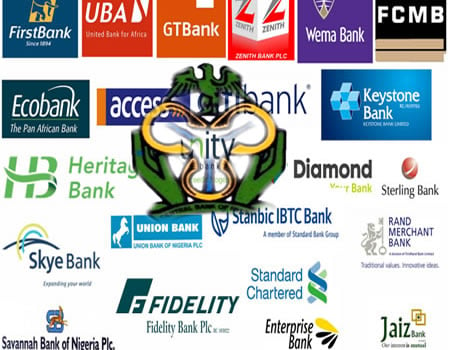How Nigerian Banks Measured Up On Capital Adequacy Ratio—Report
A new report has shown that some Nigerian banks have seen growth in their capital adequacy ratio (CAR) while others have seen a slight decline in 2021.
The Proshare Research and Intelligence department report obtained by Nigerian Tribune shows that United Bank for Africa (UBA), Access Bank and GTCO had the highest CAR at 24.90%, 24.52% and 23.83% in 2021, respectively. .
Other banks whose CARs exceeded the systemically important bank (SIB) requirements are Stanbic IBTC at 21.12%, Zenith at 20.66%, Fidelity at 20.11% and First City Monument Bank ( FCMB) at 16.24%.
At the same time, the banking system stability report showed that the banking system remains robust, stable and resilient. Available data show that all financial system stability indicators, including capital adequacy ratio, non-performing loan ratio, liquidity ratio, and returns on assets and equity, are within guidelines. prudential.
Capital adequacy, according to experts, is a situation in which a financial institution's level of capital is sufficient to absorb its losses and asset shortfalls; have sufficient capital for current operations and future growth.
The CAR then measures the sufficiency, soundness and security of the bank. It is an important measure of a bank's risk exposure because its risk-weighted component incorporates credit risk, market risk, currency risk, and interest rate risk. interest.
Proshare Research, in its report entitled “Tier 1 Reclassification, The Nigerian CAR Roadmap: Driving Capital from Strength to Strength”, stated that “While all banks registered CARs which were largely compliant with regulatory requirements for of capital for their respective categories in 2021 except Unity bank with a negative CAR.”
He noted that the allocation of eligible capital between Tier 1 and Tier 11 capital by the Nigerian banking sector exceeded the BCBS recommendation in terms of minimum CAR and proportion of Tier 1 capital.
“In terms of minimum CAR, the individual CAR trend of banks listed on the Nigerian Exchange Limited has been mixed over the past five years. top of the annual CAR table over the last five years (2017-2021) with a CAR between 19% and 27%, while other leading banks have a CAR that fluctuates between 15.5% and 20, 06% over the period.
"Stanbic IBTC and Fidelity led the other bank category with an annual CAR of between 16% and 24.70%, while Unity bank recorded a negative CAR of up to -201.59% in 2019 and -86% in 2021 due to the bank's negative shareholder fund,” the report noted.
ALSO READ FROM NIGERIAN TRIBUNE
In terms of the composition of eligible capital, he noted that the proportion of Tier 1 capital in the total eligible capital of each bank-SIB and others also remained well above the BCBS's recommendation for SIB. On average in 2021, the proportion of Tier 1 capital in total eligible capital for the Nigerian banking sector averaged around 83%, which was above the 75% threshold for SIBs. On an individual basis, only ETI had Tier 1 capital below the 75% threshold, at 67%.
The calibration of banks according to their systemic importance for the financial system and the application of higher minimum capital adequacy ratios reduce the risk of insolvency of the financial system and promote the stability and efficiency of the system. To achieve the required capital adequacy, regulators essentially require increasing eligible capital, strengthening the bank's balance sheet, or reducing risky assets on the bank's books.
However, the minimum paid up share capital to be maintained for the National Banking License in Nigeria is N25 billion or such amount as may be prescribed by the CBN, while for the Regional Banking License it is N10 billion naira and international trade. The banking license is N50 billion.

A new report has shown that some Nigerian banks have seen growth in their capital adequacy ratio (CAR) while others have seen a slight decline in 2021.
The Proshare Research and Intelligence department report obtained by Nigerian Tribune shows that United Bank for Africa (UBA), Access Bank and GTCO had the highest CAR at 24.90%, 24.52% and 23.83% in 2021, respectively. .
Other banks whose CARs exceeded the systemically important bank (SIB) requirements are Stanbic IBTC at 21.12%, Zenith at 20.66%, Fidelity at 20.11% and First City Monument Bank ( FCMB) at 16.24%.
At the same time, the banking system stability report showed that the banking system remains robust, stable and resilient. Available data show that all financial system stability indicators, including capital adequacy ratio, non-performing loan ratio, liquidity ratio, and returns on assets and equity, are within guidelines. prudential.
Capital adequacy, according to experts, is a situation in which a financial institution's level of capital is sufficient to absorb its losses and asset shortfalls; have sufficient capital for current operations and future growth.
The CAR then measures the sufficiency, soundness and security of the bank. It is an important measure of a bank's risk exposure because its risk-weighted component incorporates credit risk, market risk, currency risk, and interest rate risk. interest.
Proshare Research, in its report entitled “Tier 1 Reclassification, The Nigerian CAR Roadmap: Driving Capital from Strength to Strength”, stated that “While all banks registered CARs which were largely compliant with regulatory requirements for of capital for their respective categories in 2021 except Unity bank with a negative CAR.”
He noted that the allocation of eligible capital between Tier 1 and Tier 11 capital by the Nigerian banking sector exceeded the BCBS recommendation in terms of minimum CAR and proportion of Tier 1 capital.
“In terms of minimum CAR, the individual CAR trend of banks listed on the Nigerian Exchange Limited has been mixed over the past five years. top of the annual CAR table over the last five years (2017-2021) with a CAR between 19% and 27%, while other leading banks have a CAR that fluctuates between 15.5% and 20, 06% over the period.
"Stanbic IBTC and Fidelity led the other bank category with an annual CAR of between 16% and 24.70%, while Unity bank recorded a negative CAR of up to -201.59% in 2019 and -86% in 2021 due to the bank's negative shareholder fund,” the report noted.
ALSO READ FROM NIGERIAN TRIBUNE
In terms of the composition of eligible capital, he noted that the proportion of Tier 1 capital in the total eligible capital of each bank-SIB and others also remained well above the BCBS's recommendation for SIB. On average in 2021, the proportion of Tier 1 capital in total eligible capital for the Nigerian banking sector averaged around 83%, which was above the 75% threshold for SIBs. On an individual basis, only ETI had Tier 1 capital below the 75% threshold, at 67%.
The calibration of banks according to their systemic importance for the financial system and the application of higher minimum capital adequacy ratios reduce the risk of insolvency of the financial system and promote the stability and efficiency of the system. To achieve the required capital adequacy, regulators essentially require increasing eligible capital, strengthening the bank's balance sheet, or reducing risky assets on the bank's books.
However, the minimum paid up share capital to be maintained for the National Banking License in Nigeria is N25 billion or such amount as may be prescribed by the CBN, while for the Regional Banking License it is N10 billion naira and international trade. The banking license is N50 billion.
What's Your Reaction?






















